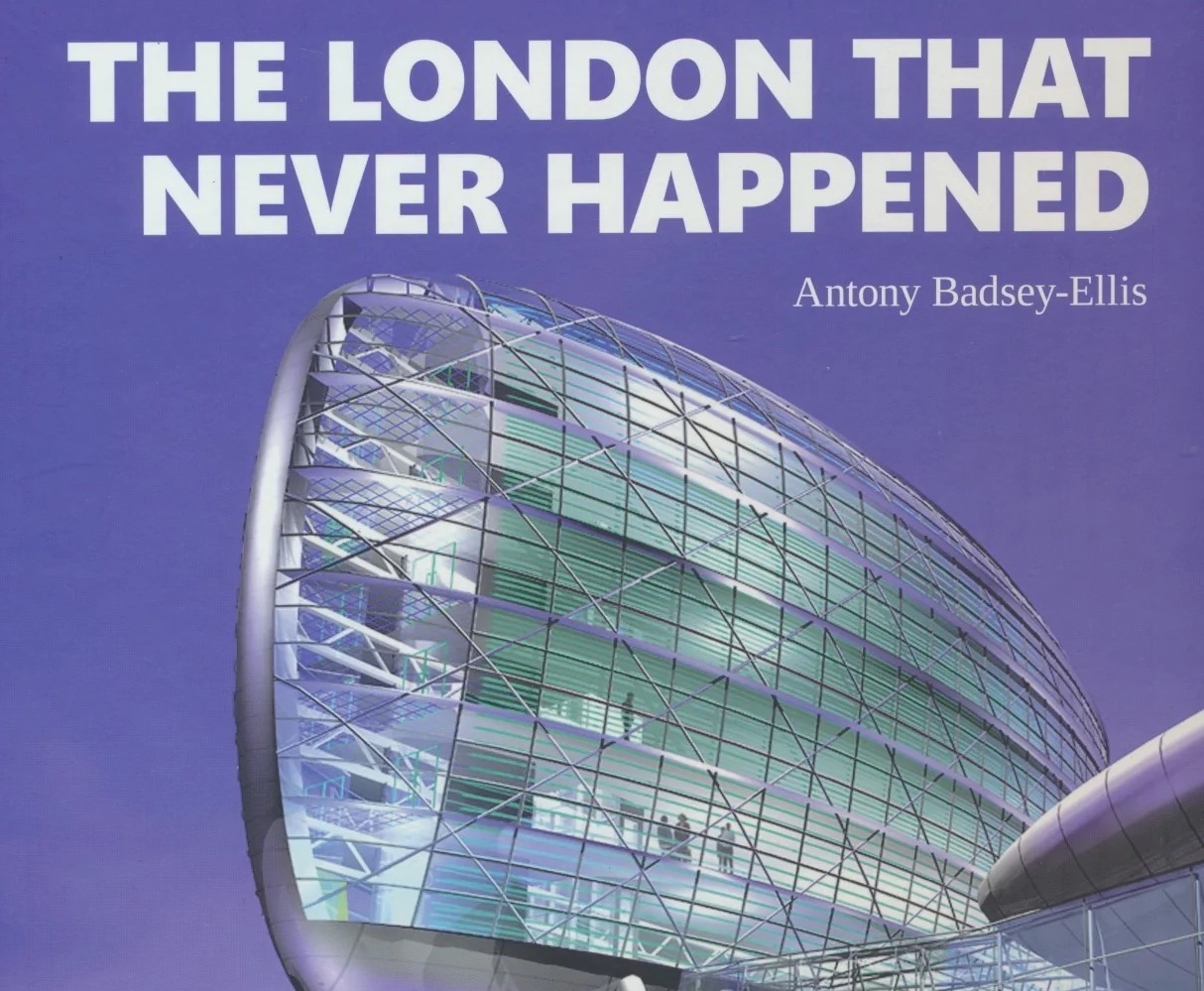Post
BOOK REVIEW | The London That Never Happened
25 Jan 2023
The London That Never Happened
By Antony Badsey-Ellis (Capital Transport £19.95)
Reviewed by Russell Nash
London looks the way it does because of decisions taken: masterplans carried out, planning decisions made, funds raised. However, it also looks the way it does because of decisions not made.: ideas dropped, plans shelved, and money that was not forthcoming. This fascinating book shows us how the capital might have been if some of these ideas had come to fruition.
Until now the standard work on the subject has been Felix Barker and Ralph Hyde’s 1982 London As It Might Have Been. This new book takes a fresh look at some of those old ideas but is also able to show us more recent unbuilt schemes.
Benefiting from an author with a background of transport writing, The London That Never Happened covers plenty of unbuilt schemes in that area, such as the ill-fated 1943 County of London Plan which would have demolished huge swathes of central London to build wide roads (only the later Westway exists to remind us of the damage such a plan would have caused).
Then there are the ‘Pedways’ (a handful of which still survive) planned to cut across the whole of the City of London, raising pedestrians above the network of highways for motor vehicles. There are the early 20th Century plans to create Kingsway style boulevards across the West End, ringways and Monorails and Tube lines which were left unbuilt. Plus more recent schemes such as the Livingstone plan for a tramway from Camden to Peckham which was stymied by local opposition along its route.
And bridges, lots and lots of bridges. For example, the 1909 St Paul’s Road bridge or the 1916 plan to move Charing Cross Station to the south bank and replace the rail bridge with one for motorists. Or the 1979 proposal for a sleek, £300m structure linking Becton and Woolwich which would have cut huge swathes through Oxleas Wood. Not forgetting, of course, the outlandish (and outlandishly expensive) Garden Bridge of very recent memory.
Most interesting, perhaps, are the bizarre schemes which only ever existed in visionaries’ imaginations. Why not re-route the Thames, asked William Walcot in 1933; the river would run south of Bermondsey and free up more space for docks and warehouses. Or how about an airport, with a circular runway, behind Kings Cross Station? Where Trafalgar Square stands today we could have had a Ziggurat as high as St Paul’s to commemorate the Napoleonic wars. And to demonstrate the superiority of London over Paris, let’s build a Tower higher than M. Eiffel’s, in Wembley. (This one did get started, but ran out of funds soon after. A 50m high stump stood for a dozen years).
There was the proposal in the 1950s to demolish Piccadilly Circus and replace it with monstrous concrete office blocks that would have covered most of Soho. Badsley-Ellis even looks at the extension to the National Gallery that Prince Charles famously derided as a ‘monstrous carbuncle’.
These examples, plus many more, make this an engrossing and engaging addition to any Londoner’s bookshelf.
Russell Nash is a London Blue Badge Guide
